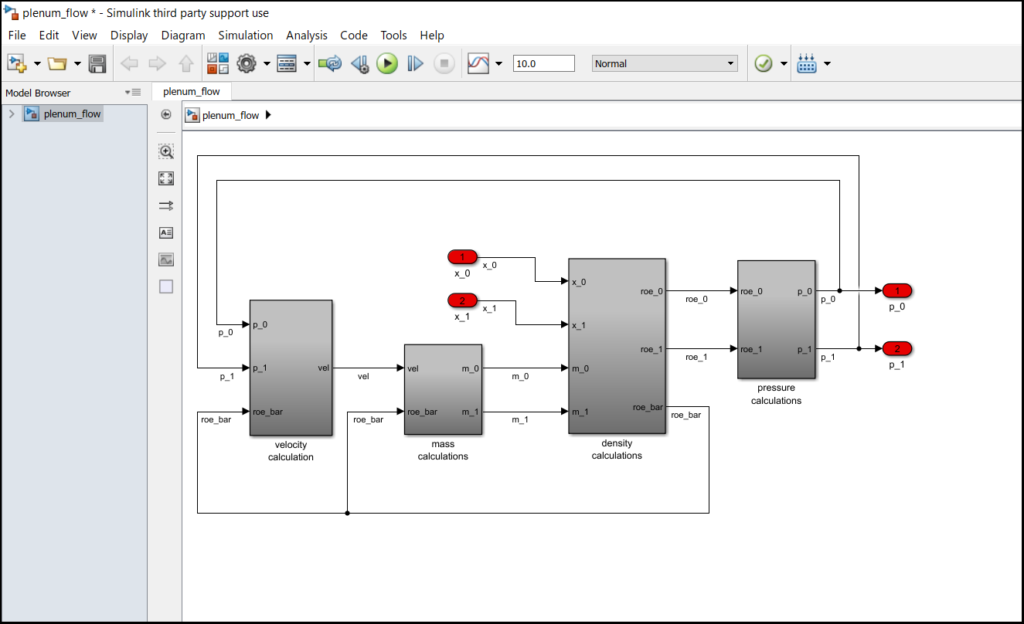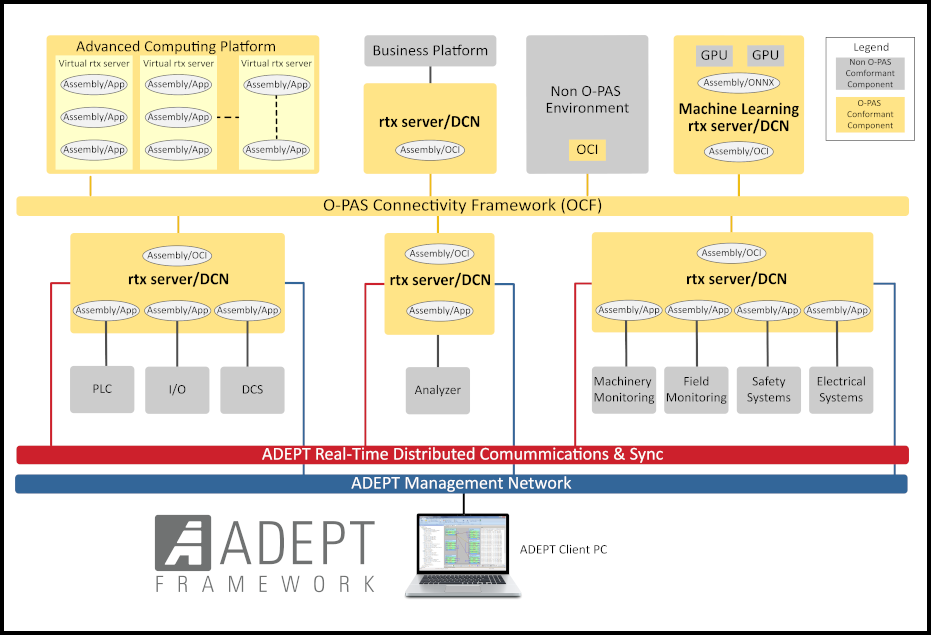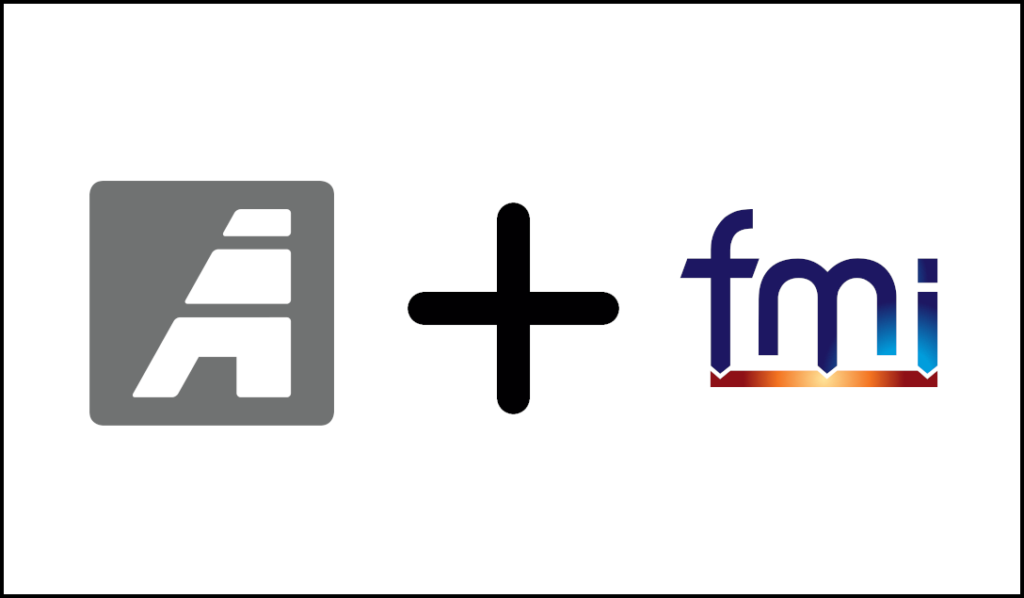The ADEPT Framework and its predecessors have been facilitating efficient and effective real-time verification and validation activities at global aerospace, defense, and industrial sites for decades. The benefits and capabilities of ADEPT however are not confined to test scenarios that require a physical operator presence. As remote work continues to grow in popularity and necessity, the ADEPT Framework and its associated cyber-physical systems are well equipped to meet the unique demands of verification and validation testing when developers and testers are on the other side of the campus, the country, or the world.
Benefits of Remote Work
Recent events have rapidly accelerated the demands for remote work capability. However, the tech industry has been gravitating towards remote work for years as there are many clear and tangible benefits. At the most fundamental level, remote work allows for flexible application of human resources. Corporations and organizations developing the large, complex systems that ADEPT excels with will often have employees located at various sites throughout the world. Allowing remote connection to cyber-physical systems opens the door for productive collaboration at a meaningful level. When workers at various geographical sites become familiar with, and can work effectively on remote systems, their efforts can be easily reallocated as project demands invariably increase or wane – at a considerable cost savings to the corporation. The flexible scheduling that remote work affords is also attractive to potential employees and can allow access to top level talent unwilling or unable to relocate to physical test sites.
Remote Connection Options
Remote operation of the ADEPT Framework will require a connection to the client, at least at some point in the development and test cycle. The most effective connection method will depend on various factors such as corporate IT & cybersecurity practices, the data handling requirements of a particular test or rig, the physical location of the tester or developer and the computational and network resources at their disposal.
Remote Connection Sites
Within Facility
Users may opt to connect to the client from an office or workstation that is within the same facility as the test lab, but not directly in the lab itself. In this case, the simplest method is often a Windows Remote Desktop connection, or an XWindows session. Additionally, if the user workstation is on the same network as the lab hardware, the user may opt to simply run the client software applications (ADEPT-DE, ADEPT-VI, etc) directly on their local workstation.
Off-site Organizational Facility
In many cases, the most widely utilized remote connection configuration is when users connect to the system from an off-site organizational location. This setup enables cross-collaboration between geographically separated teams while utilizing network and connection setups that can be optimized by internal IT. Users may run the client applications locally or remotely with minimal effect on performance.
Home Office
Users connecting to the client from a home office, or any other location that is not associated with the organization, would generally require using an organizational secure VPN connection to the client. In most cases, due to cybersecurity constraints and generally more variable and unpredictable network performance, users would opt to run the client applications remotely.
ADEPT Framework Remote Operation
The ADEPT Framework client applications have varying levels of interaction with the cyber-physical system, depending on their function. As such, remote operation considerations with each application vary as well.
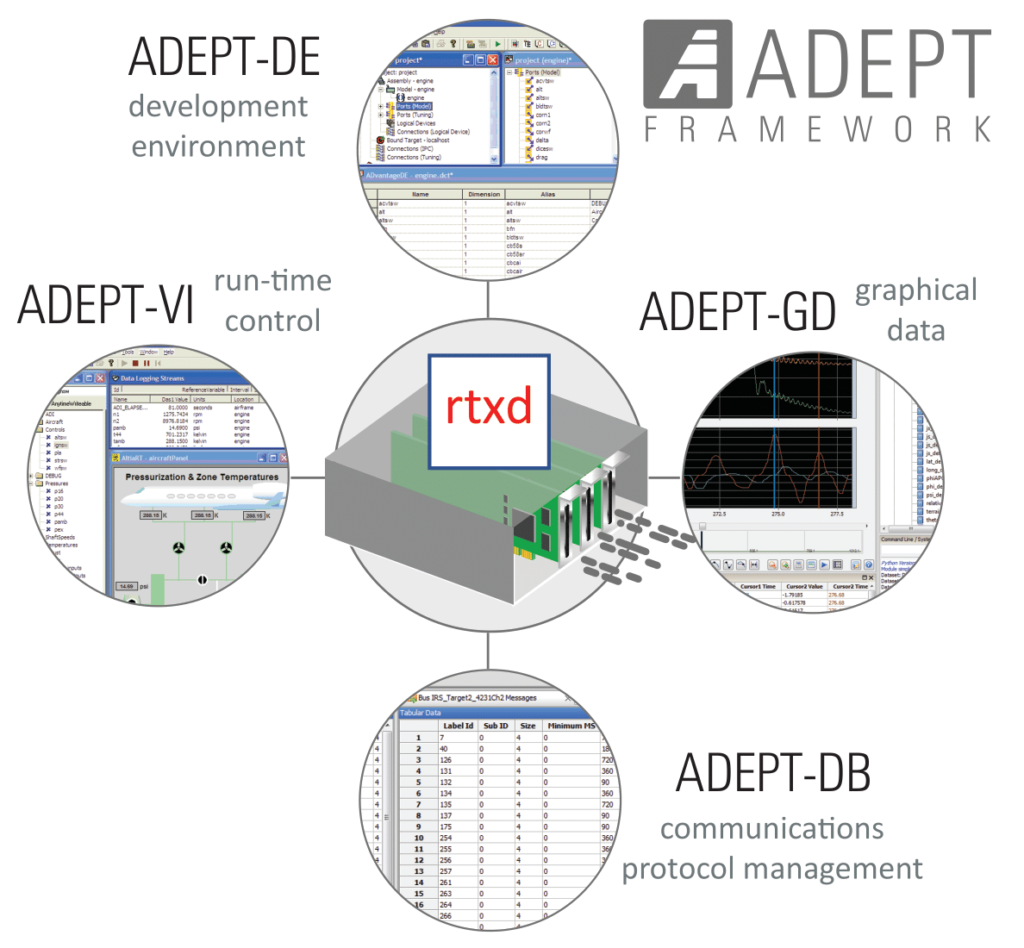
ADEPT Framework Applications
- ADEPT-DE – Configuring project setup and performing real-time executable builds requires no connection to physical hardware. Given necessary licensing for model builds, all functions of ADEPT-DE interaction can be performed completely remotely exactly as they would on-site.
- ADEPT-VI – The run-time control application is the most closely connected application to lab hardware during the run. However, regardless of where users opt to run ADEPT-VI, time-critical deterministic operations such as signal scheduling and triggered events are executed on the real-time server, ensuring credible test execution and results.
- ADEPT-GD – Streaming live data and recording data during test can easily be achieved remotely, although considerations must be made for network performance. The post-processing analysis capabilities, powered by Python and its libraries, requires no interaction with lab hardware, and compressed XDR data log files can be easily shared with team members.
- ADEPT-DB – The communications network management tool has no interaction with the project at run-time. Modifications to the network definition and supporting file generation can be made in a manner identical to when working on-site.
Test Setup & Scripting
Recent trends to increased test automation have been largely driven with increased efficiency and enhanced test coverage in mind. However, the development of these capabilities has also made remote system operation increasingly practical and efficient as well. The ADEPT Framework has been designed with automation considerations at every step. The ADEPT Framework includes a fully functioning Python engine. Python functions are included and allow users to perform any manual function in ADEPT applications via script. Provided APIs enable connection to internally developed applications.
Prior to run, projects can be set to automatically configure project initialization and script execution in ADEPT-DE. Once launched, this allows tests to be automatically started. The level of user interaction required can be set to any level desired. This can allow a simplification of operation for remote testers and decrease the chance for confusion or human error.
Remote Data Monitoring & System Control
At run-time, remote interaction with the system is handled via ADEPT-VI. Enhanced remote data monitoring capabilities are provided by ADEPT-GD. ADEPT Panels allow integrated GUIs to be created, which allow for easy monitoring of critical system status variables, or to perform common operations at run-time.
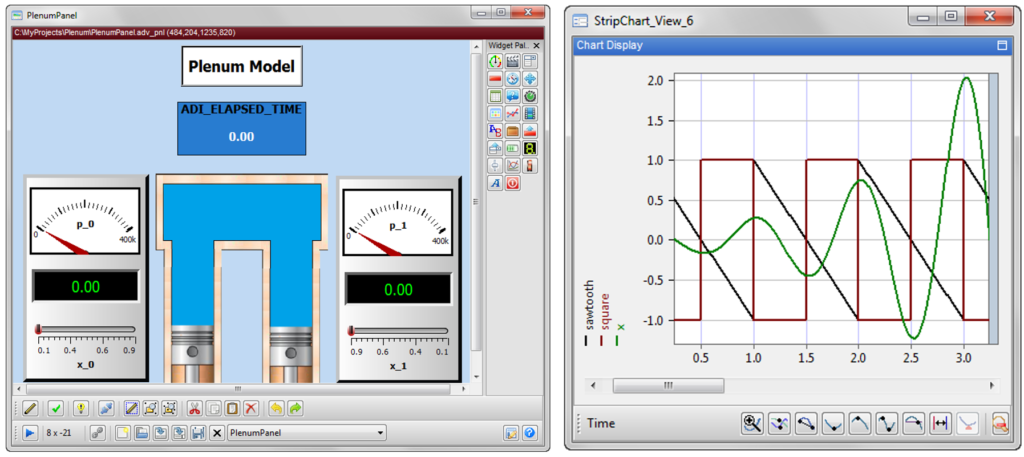
ADEPT Panel & ADEPT GD System Monitoring & Control
Many existing ADEPT Framework cyber-physical systems are already well positioned to be controlled remotely. Often, the final pieces required for full remote control are simple operations – bringing up or down facility power at the beginning or end of testing, power cycling systems or subsystems during troubleshooting operations via a physical device, or verifying a visual output from a unit under test. With the continued proliferation and dropping costs of IoT connected devices, these procedures can be configured to allow remote control with a small amount of investment in cost and effort. Smart switches, linear physical actuators where button pushes are required, and ML enabled visual processing can all be harnessed and integrated into the ADEPT Framework to address these simple, yet critical physical operations.
Once the system test requirements and test plans have been defined, remote operation allows the actual test execution and data logging activities can be outsourced to global resource centers. These services can be performed at a lower labor cost, and during off-hours, allowing 24/7 system hardware utilization. This allows the high-value development portions of the team to effectively prioritize their efforts without being tasked with test execution activities that, even when scripted, can become repetitive and mundane. A few up-front investments in remote capabilities can lead to tremendous program cost reductions and time savings.
Test Executive
A new tool within the ADEPT Framework, the Test Executive, allows for automated remote operation of a fully defined Test Plan. The Test Executive helps to create, manage, and execute a Test Plan that contains a data hierarchy of Python objects. A Test Plan may consist of a variety of files including scripts, setup files, data files, ADEPT panels, etc. The Test Executive may use the Python Subversion or ftp functionality to download those files locally for operation. Test results may also be uploaded to a Subversion repository or FTP server. The Test Executive can be run independently of the user’s ADEPT-DE framework and projects. The Test Plan can be easily shared and reviewed amongst team members prior to utilizing hardware, and then executed remotely at run-time.

The Test Executive Hierarchy
Conclusion
The demands for remote operation of complex, cyber-physical verification and validation capabilities continue to grow. Utilizing the ADEPT Framework for automation and remote operation allows users the most efficient and effective access to their cyber-physical test systems.
Contact your local ADI representative today to see how the ADEPT Framework can improve the quality and efficiency of your cyber-physical product development activities from any location in the world, regardless of where your physical system resides.
